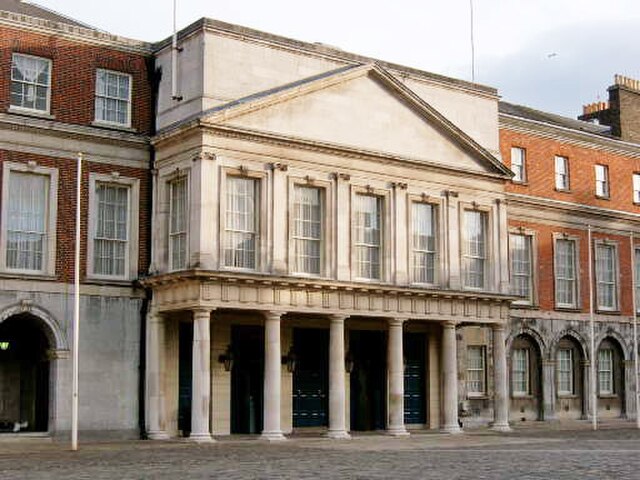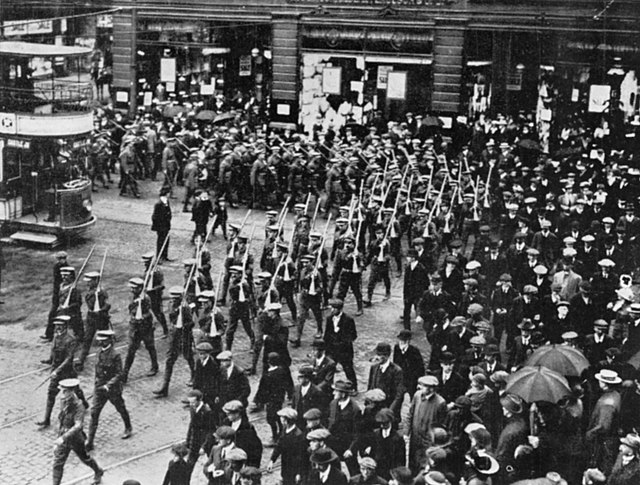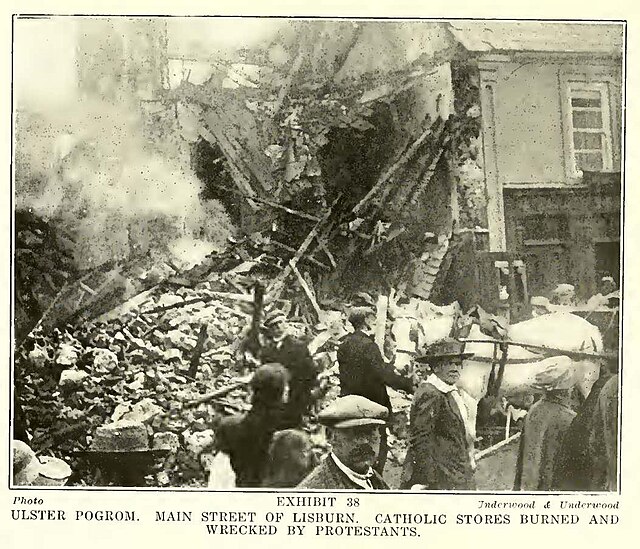Lord Lieutenant of Ireland
Lord Lieutenant of Ireland, or more formally Lieutenant General and General Governor of Ireland, was the title of the chief governor of Ireland from the Williamite Wars of 1690 until the Partition of Ireland in 1922. This spanned the Kingdom of Ireland (1541–1800) and the United Kingdom of Great Britain and Ireland (1801–1922). The office, under its various names, was often more generally known as the Viceroy, and his wife was known as the vicereine. The government of Ireland in practice was usually in the hands of the Lord Deputy up to the 17th century, and later of the Chief Secretary for Ireland.
The Lord Lieutenant of Ireland was the ex officio Grand Master of the Order of St Patrick (uniform shown here worn by William Ward, 2nd Earl of Dudley, Lord Lieutenant from 1902 to 1905).
The Viceregal Apartments in Dublin Castle – the official 'season' residence of the Lord Lieutenant
The Viceregal pew in St Patrick's Cathedral, Dublin
The partition of Ireland was the process by which the Government of the United Kingdom of Great Britain and Ireland (UK) divided Ireland into two self-governing polities: Northern Ireland and Southern Ireland. It was enacted on 3 May 1921 under the Government of Ireland Act 1920. The Act intended both territories to remain within the United Kingdom and contained provisions for their eventual reunification. The smaller Northern Ireland was duly created with a devolved government and remained part of the UK. The larger Southern Ireland was not recognised by most of its citizens, who instead recognised the self-declared 32-county Irish Republic. On 6 December 1922 Ireland was partitioned. At that time the territory of Southern Ireland left the UK and became the Irish Free State, now known as the Republic of Ireland.
Ulster Volunteers marching in Belfast, 1914
Catholic-owned businesses destroyed by loyalists in Lisburn, August 1920
Crowds in Belfast for the state opening of the Northern Ireland Parliament on 22 June 1921
Members of the Irish negotiation committee returning to Ireland in December 1921







